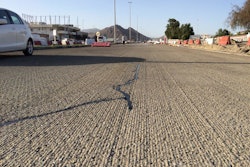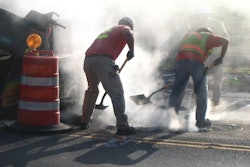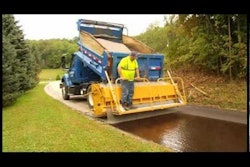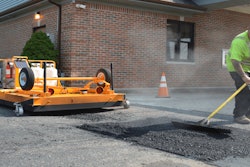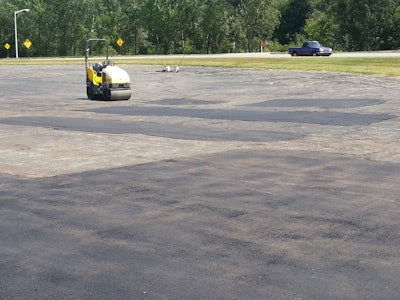
Ride quality and a lasting pavement are two things everyone can agree on when it comes to the surfaces we drive on. Pavement preservation in the form of crack sealing and overlays are essential to extending the life of a pavement. However, while rare, bumps in overlays can form. These bumps threaten both ride quality and pavement life.
Crack sealing is a common method of pavement preservation because it prolongs pavement life by preventing water intrusion into the base layers as cracks develop in the pavement surface. During the life of most asphalt concrete pavements overlays are then placed on top of sound pavements that have properly sealed cracks. These overlays rehabilitate and further extend pavement life.
During breakdown rolling of the overlay, transverse bumps and cracks have been known to form above and in front of the location where crack sealant was placed in the underlying pavement. There are multiple reasons that may cause this phenomenon, including mix design, climatic conditions, paving and compaction equipment, timing of the overlay with respect to sealant placement, sealant type and pavement grade.
The proper application of crack sealant, along with the proper compaction of the overlay can prevent formation of these bumps or significantly reduce the likelihood bumps could form.
The Bump Stops Here
Sealing cracks in a pavement that will eventually receive an overlay requires special attention as any crack sealing method should be allowed at least six months to cure before an overlay is placed.
If the proposed overlay is to be more than 2-in. thick and is to be constructed in more than one lift, follow these crack preparation procedures:
- Route and seal cracks flush with the existing and surrounding pavement
- Overband of the crack repair should be no more than 3-in. wide
- Overband should be as thin as possible and should not exceed 1/8-in. thick
- Note: distresses are more likely to occur if an overlay is placed within a year of a pavement that has had crack sealing completed with overbanding methods.
If the overlay to be placed is less than 2-in. thick, special care must be taken during crack sealing:
- Cracks must be routed
- Sealant must be placed flush to the pavement surface or slightly below the surface
- Sealant may be squeegeed and flush filled if the band is less than 3-in. wide. A slight under fill is preferred
- Do not use a sealant shoe for sealant application
As sealant ages, it has a tendency to form an oxidized, non-tacky surface which resists overlay adherence. Exposure to traffic tends to wear away sealant in pavement surfaces and smooth it down level with the pavement surface. This is why it’s recommended that overlays take place at least a year after crack sealing.
Proper Sealant Placement
In the process of overlay compaction, the rollers tend to shove the mix forward. If this happens on an underlying pavement surface which has uniform restraining characteristics, a smooth finished surface can be achieved. However, if the underlying pavement surface varies significantly due to irregularities or conflicting materials -- like those that may be present after crack sealing -- uneven shoving could result in unwanted bumps.
When the hot mix asphalt overlay is placed, the underlying pavement will absorb the heat and expand due to the temperature change. As the heat from the hot mix warms the original pavement surface, cracks become narrower, which in turn causes the crack sealant to be pushed upwards. Most crack sealants have adhesive and elastic properties, so when pushed upwards may stick to the overlay and limit overlay displacement during the compaction process. This could create a slight bump.
Bumps caused by crack sealant are rare, but when they do occur it’s likely because too much sealant has been applied. In this case, the overlay grows and results in a bump which expands as it warms. This is easily remedied by scraping excess sealant off the pavement or by applying a scratch coat of HMA prior to the overlay application.
The quality of the sealant also matters. If the crack has a hard, stiff sealant in place, it may not adhere to the overlay; and soft, low-melt temperature sealants may soften enough when heated by the overlay to not restrain the mix if it displaces during compaction. Medium stiffness sealants with elastic properties may have a tendency to soften, adhere and restrain the overlay.





